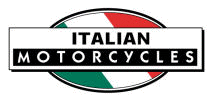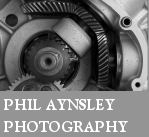


This page lists brands for which limited information is available. For a more complete listing visit the Italian Index.
See also Obscure Italian Marques.
Galetti
Built in Milan, 1923-1927
On the 19th of April 1924 Andrea Galetti was practising for the 1924 Circuito di Belfiore motorcycle race, to be held near Mantua on the 20th.
Andrea swerved to avoid a cyclist, lost control and landed badly. He died of his injuries a few hours later.
The 500cc machine had been built in his brother Mario's workshop in Milano.
Galetti was from Castel d'Ario, as was Tazio Nuvolari, to whom he may have been related. Nuvolari won the race the following day, riding a 500cc Norton.
Sources: motorsportmemorial.org; Mauro Colombo
Galletti 1950s, Bologna
GAOMA
Based in Lodi, Milano, the firm produced a 65cc scooter named Daino in 1951 with bodywork by Magni of Milan. Later models had 75cc engines, and they remained in production until 1954. In total some 220 were built, 67 of the first model and around 150 of the second.
Engines are reportedly of their own manufacture.
Sources: motoclubstoricoconti.it, scooterdepoca.com, et al.
N.B. Bertoni of Lodi built mopeds which were sold in Belgium under the Daino brand during the mid-1950s.
Ghezzi & Brian 1995-
Gnesutta 1899-1900
GP (Griffoni & Piccini)
In 1927 Luigi Griffoni and Libero Piccini of Falconara Marittima (Ancona) built a motorcycle named GP. It had a 216 cc four-stroke horizontal single-cylinder engine of their own design which ran on diesel or petrol. It was only built that year.
Not to be confused with the GP by Guzzi and Parodi, the forerunner of Moto Guzzi.
Source: Benelli Museum

GRC-Moto
via Cervino, 10/D - 22060 Figino Serenza (CO) - Italy
Models: GP10, GP12, Minimoto
Website: grcmoto.com
FB: fb.com
Grillo 1949~1953
Guia
Manufactured by Officine Ettore Buralli, Vanam, Milano, 1950-1954
Built lightweights with two-stroke engines of 98, 123 and 147 cc. A Turismo model was available with a pressed metal frame, and a Sport with tubular frame.
Sources: wikipedia.nl, Tragatsch p153.
Rarer Italian Marques